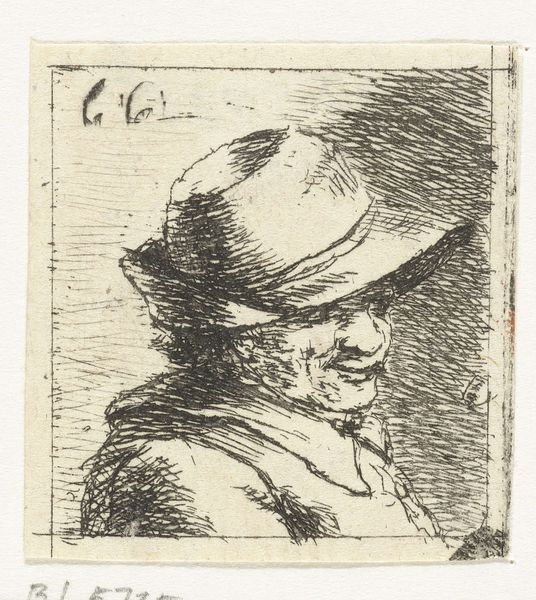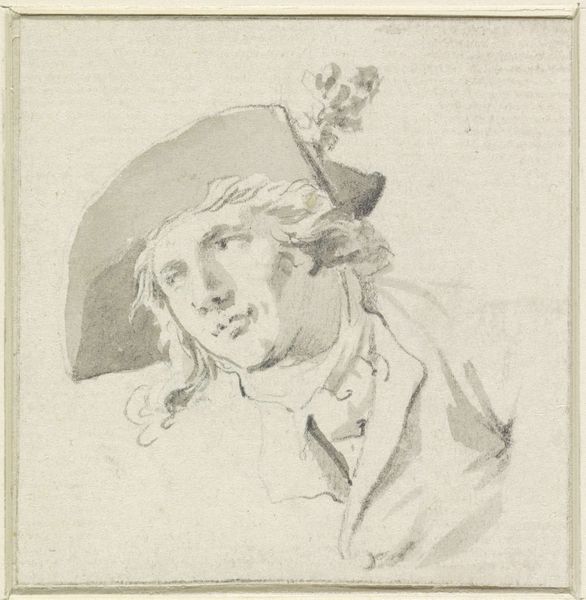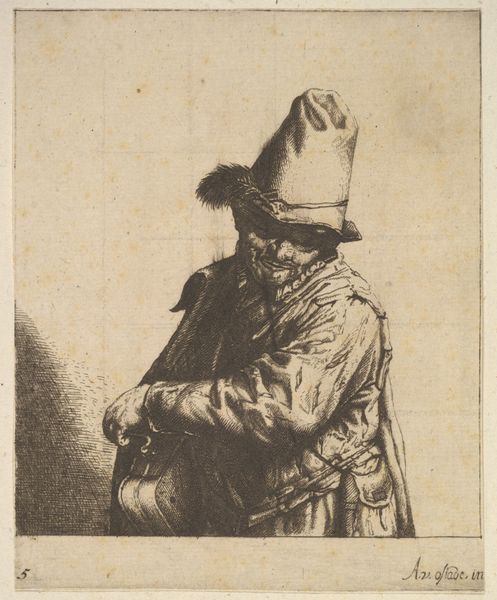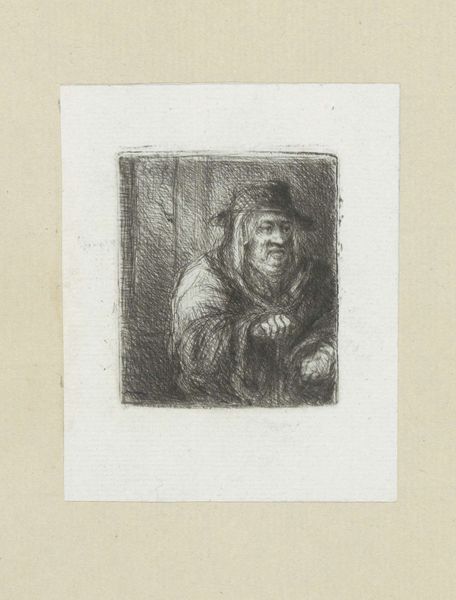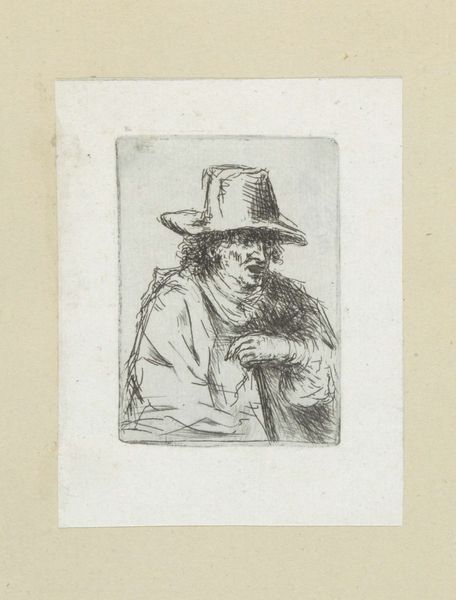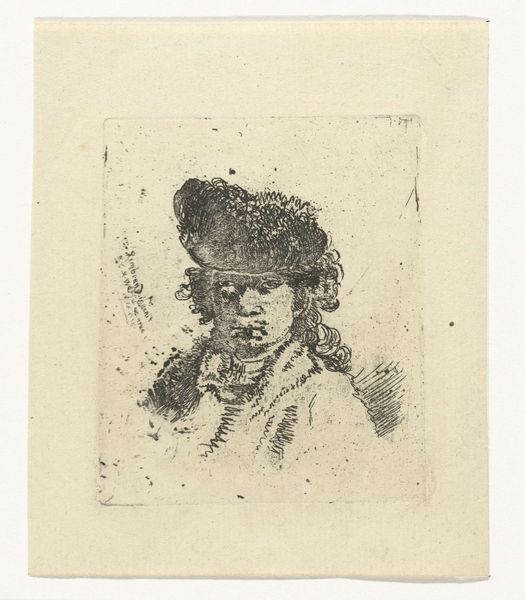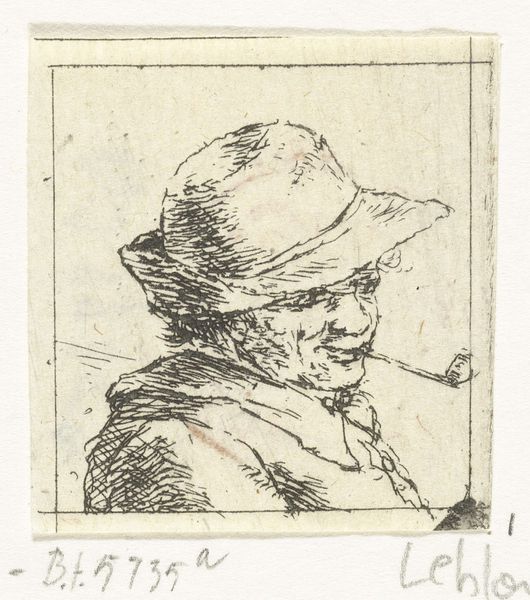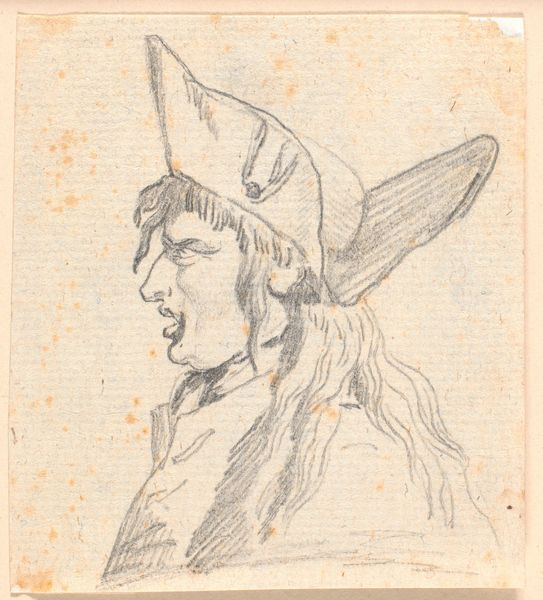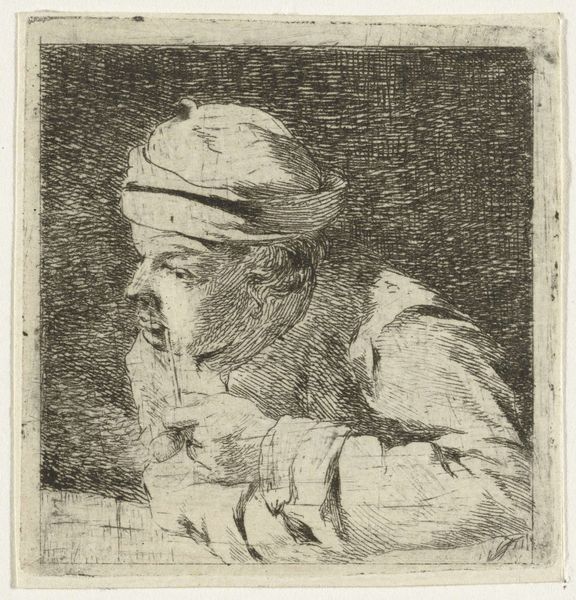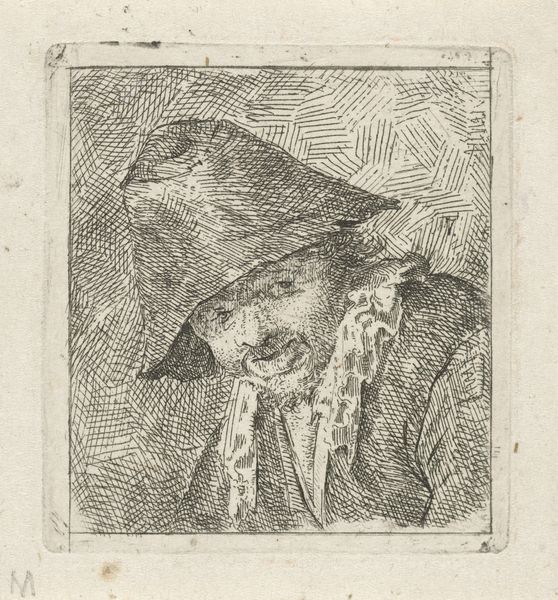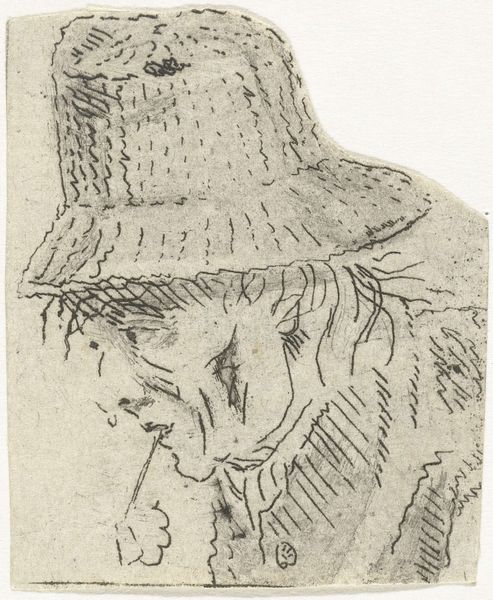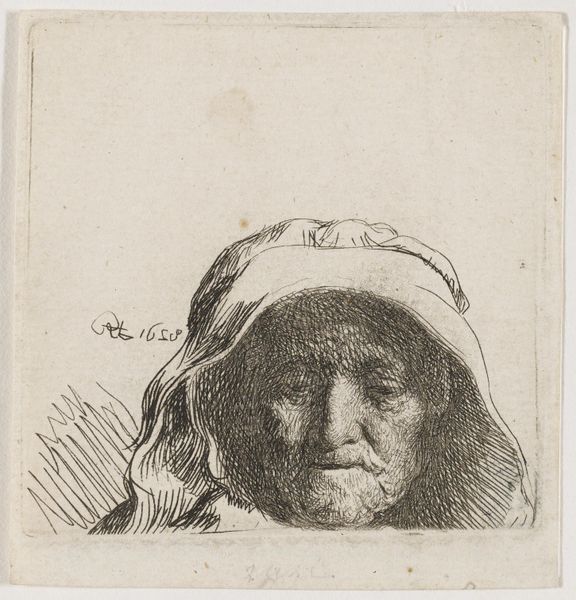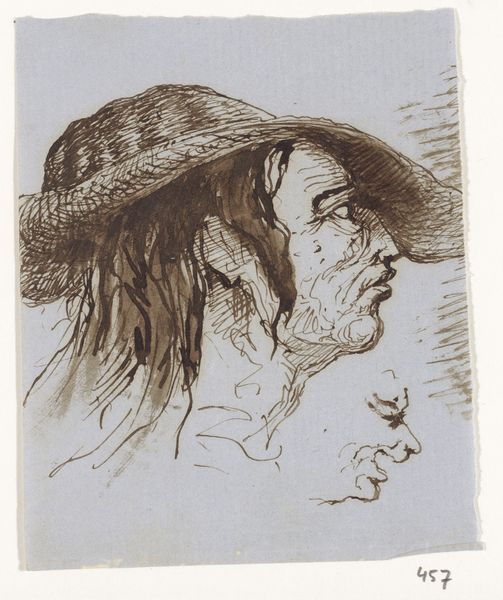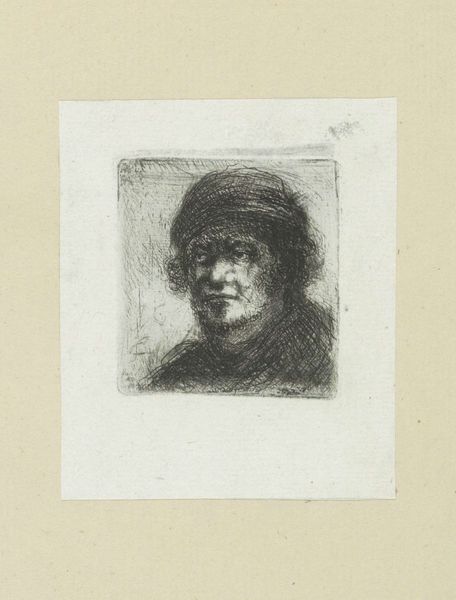
print, engraving
#
portrait
# print
#
genre-painting
#
engraving
Dimensions: height 53 mm, width 50 mm
Copyright: Rijks Museum: Open Domain
Editor: So, this is "Portret en profil van man met gevederde hoed" – Portrait in profile of a man with a feathered hat, an engraving by Hermanus Fock, created sometime between 1781 and 1822. The texture created through the engraving process is what strikes me. What are your thoughts? Curator: Well, considering Fock's means of production, an engraving involved a very specific and painstaking labor. Each line, each tonal shift, carefully etched into a metal plate. The final print then circulated amongst a particular stratum of society—consider its value as a commodity, as something traded and displayed. How might we understand the relationship between the sitter’s status, and the consumption of such portraiture? Editor: I hadn’t considered that economic aspect of portraiture back then. Is the way he used the material specific to his time, and how? Curator: Engraving was a relatively accessible method of image reproduction compared to painting, democratizing portraiture to some degree, making it available beyond the very wealthy. The availability of the print medium and the cost of paper affected the reach. And, notice how Fock leaves the background relatively bare— perhaps to expedite the process, or maybe to intentionally draw attention to the man’s attire and the delicate hatching used to describe his face. Editor: That's fascinating! It makes you think about how people interacted with art in everyday life, not just in galleries. Did the average person own such an engraving? Curator: Probably not the 'average' person. But a growing merchant class, perhaps aspiring professionals... people eager to display symbols of status. So, how does considering the labour and circulation of this engraving change how we perceive the image itself, the man in the feathered hat? Editor: I'm seeing it as more than just a picture. It's a tangible object tied to economics and social standing of the time. Thinking about how prints moved around, bought and sold, gives a richer understanding of the culture it came from. Thank you! Curator: Exactly! By analyzing the material reality of this work, its production and consumption, we gain a deeper understanding of the societal currents that shaped its creation.
Comments
No comments
Be the first to comment and join the conversation on the ultimate creative platform.
